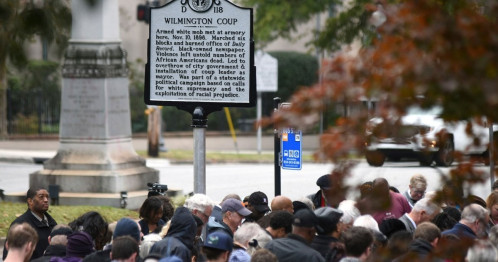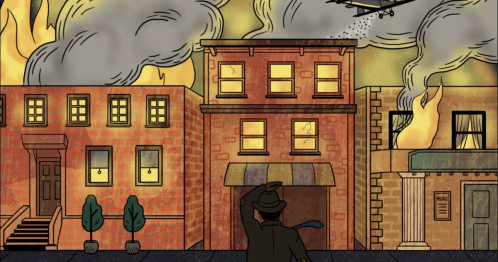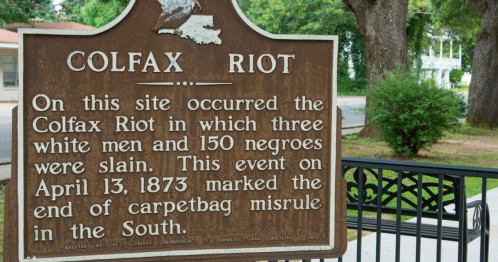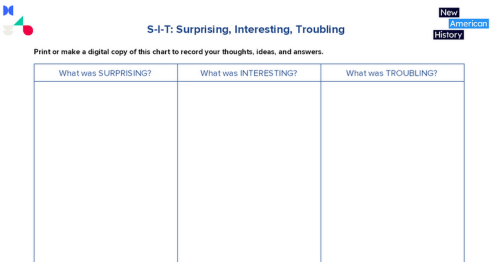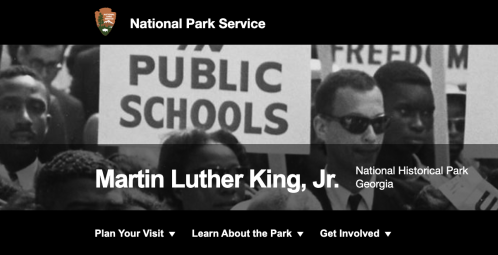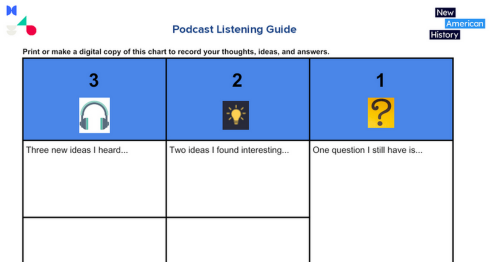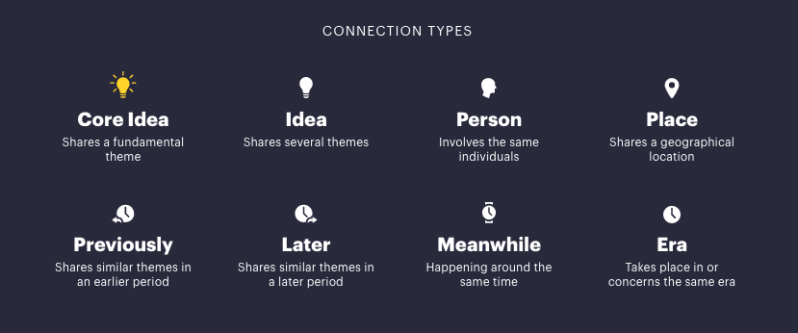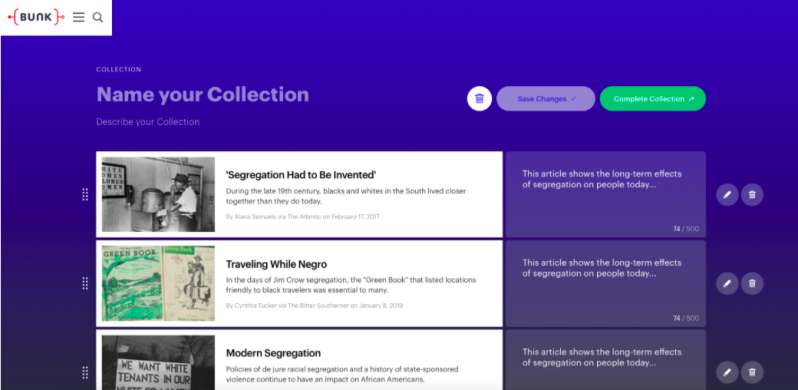This work by New American History is licensed under a Attribution-NonCommercial-ShareAlike 4.0 (CC BY-NC-SA 4.0) International License. Permissions beyond the scope of this license may be available at newamericanhistory.org.
A Brief Moment in the Sun
View Student Version
Standards
C3 Framework:D2.Civ.3.6-8. Examine the origins, purposes, and impact of constitutions, laws, treaties, and international agreements.D2.His.1.6-8. Analyze connections among events and developments in broader historical contexts.D2.His.16.6-8. Organize applicable evidence into a coherent argument about the past.
National Council for Social Studies:Theme: Power, Authority, and GovernanceTheme: Civic Ideals and Practice
Teacher Tip: Think about what students should be able to KNOW, UNDERSTAND and DO at the conclusion of this learning experience. A brief exit pass or other formative assessment may be used to assess student understandings. Setting specific learning targets for the appropriate grade level and content area will increase student success.
Suggested Grade Levels: Middle School (6-8)
Suggested Timeframe: 2 block periods (90-minute blocks)
Suggested Materials: Internet access via laptop, tablet, or mobile device
Key Vocabulary
Amendment - to officially change a document, law, or policy, such as a Constitutional amendment
Blackface - the practice of applying charcoal or black makeup to a white person’s face to imitate the appearance of a black person; today this is seen as highly offensive
Discrimination - the unfair treatment of people based on their race, gender, age, etc.
Jim Crow laws - state and local laws that enforced segregation between races
Ku Klux Klan (KKK) - a white supremacist group founded in 1865 to intimidate African Americans and other minority groups from asserting themselves in any way, including politically
Legacy - money, property, ideas, or values
Lynching - the illegal killing of people by gangs of violent vigilantes
Minstrel - a form of entertainment during the late 1800s and early 1900s where white actors wearing blackface performed songs, dances, and comedy routines based on negative stereotypes of black Americans
Overturn - to reverse or abolish a law
Plessy v. Ferguson - A landmark Supreme Court case and ruling that upheld the legal separation of facilities for different races, establishing the “separate but equal” policy for many years
Segregation - the practice of race-based separation in public spaces including schools, public transportation, restroom facilities, and neighborhoods; many communities in the United States were segregated for centuries, and while the Civil Rights Movement of the 1960s removed many legal barriers, some are still socially segregated.
14th Amendment - A Constitutional amendment added after the U.S. Civil War providing citizenship to all people born or naturalized in the United States
Read for Understanding
Teacher Tip:
This Learning Resource is an adaptation of our previously published high school lesson on Reconstruction, with content and readability of resources more suitable for younger learners.
This Learning Resource includes language in the body of the text to help adapt to a variety of educational settings, including remote learning environments, face-to-face instruction, and blended learning.
If you are teaching remotely, consider using videoconferencing to provide opportunities for students to work in partners or small groups. Digital tools such as Google Docs and Google Slides may also be used for collaboration. Rewordify helps make a complex text more accessible for those reading at a lower Lexile level while still providing a greater depth of knowledge.
This Learning Resource uses the S-I-T: Surprising, Interesting, Troubling teaching strategy described by Facing History and Ourselves and the Step In - Step Out - Step Back thinking routine from Project Zero. Both of these routines offer students the opportunity to consider alternate perspectives and grapple with difficult topics in history. The Jigsaw instructional strategy is also used to increase student engagement, encourage collaboration, and promote deeper learning of content as explored in more complex texts.
The themes of racism, segregation, violence, and white supremacy are covered in this Learning Resource. Reading and talking about violence, white supremacy, and groups like the KKK can be traumatizing or upsetting for students if not properly contextualized. You know best which content works for your classroom.
Note: in the video, “As blacks fled Jim Crow, tensions rose in north,” at time stamp :47 there is an image of a Black man being lynched. Teachers should prepare students beforehand for viewing historic images of racial violence, or determine if it is appropriate for their students.
Additionally, this Learning Resource includes a podcast listening activity. The entire podcast episode is 51:27 minutes. It can be downloaded in full from American Public Media and edited on your device. If you only want to assign a portion of the episode, it is recommended that you include minutes 0:00–14:20 (history of “Jim Crow,” life for African Americans under Jim Crow, disenfranchisement, and sharecropping) and 20:25–33:49 (“living behind the veil” and resistance to Jim Crow). If you download and edit the file, you can make only these two sections available to students.
Depending on time, it may also be interesting to include minutes 35:50–49:15, which shares White memories and perspectives of segregation in Louisiana. Be careful to facilitate these conversations carefully, as the stories of racism and degradation included in this segment may feel particularly dismissive and painful to students of color.
Be aware that minutes 14:21–20:24 include discussions of lynchings and sexual relationships (both consensual and non-consensual). This section of the episode may not be appropriate for younger listeners. You know best which content works for your classroom.
These Learning Resources follow a variation of the 5Es instructional model, and each section may be taught as a separate learning experience, or as part of a sequence of learning experiences. We provide each of our Learning Resources in multiple formats, including web-based and as an editable Google Doc for educators to teach and adapt selected learning experiences as they best suit the needs of your students and local curriculum. You may also wish to embed or remix them into a playlist for students working remotely or independently.
For Students:
After the Civil War and Emancipation, Black Americans briefly experienced new freedoms, but this soon changed. How, and why?
Engage:
To what extent was Reconstruction merely “a brief moment in the sun” for Black Americans?
Use the Step In - Step Out - Step Back thinking routine to consider the above quote from W. E. B. DuBois from Black Reconstruction in America.
- Step In: Based on what you know right now, what do you think DuBois might have felt, believed, known, or experienced when he wrote this in 1935?
- Step Out: What else would you like or need to learn to understand this DuBois’s perspective better?
- Step Back: Given your exploration of this perspective so far, what do you notice about your own perspective and what it takes to think about somebody else’s perspective?
The 14th Amendment says that “No state shall make or enforce any law which shall abridge [restrict] the privileges or immunities of citizens of the United States; nor shall any state deprive any person of life, liberty, or property, without due process of law; nor deny to any person within its jurisdiction the equal protection of the laws.”
Think about what is meant by “equal protection of the laws.” After some think time, turn and talk with a neighbor. If working remotely, your teacher may provide opportunities to collaborate using video conferencing, access to an online chat feature, or breakout rooms.
Next, watch this short video from Black Excellence on YouTube, Plessy v Ferguson: The case that triggered separate but equal, regarding the impact of Plessy v Ferguson on Reconstruction on the African American community in the years after the Civil War.
In 1896, the court case Plessy v. Ferguson sought to deal with the question of separate facilities for white citizens and those of other races. Homer Plessy, an African American man, boarded a train in Louisiana, sat in the car that was designated for white passengers, and was arrested. Using the 14th Amendment, he argued that segregation violated his civil rights. However, the Supreme Court disagreed and ruled that “equal but separate” facilities did not violate the 14th Amendment, upholding the Jim Crow laws of the era.
Reflect on the video and the case Plessy v. Ferguson before turning and talking with a partner or collaborating remotely to discuss the following questions:
- How did your interpretation of the 14th Amendment compare with that of the Supreme Court?
- How did it contrast with the Supreme Court decision?
Your teacher may ask you to record your answers on an exit ticket.
Explore:
When and where did violent white supremacy grow in response to Black freedom?
Watch this video clip about the summer of 1919, called the Red Summer because of the racial violence that occurred across the nation.
Next, take a look at this map showing where these attacks happened in 1919.
- What do you notice?
- What do you wonder?
Your teacher will assign you to read one of four excerpts about the rise of violent white supremacy during and after the period of Reconstruction: (1) We’ve Had a White Supremacist Coup Before. History Buried It., (2) The Destruction of Black Wall Street, (3) The Forgotten History of America’s Worst Racial Massacre, or (43) The Massacre That Emboldened White Supremacists. Be sure to explore some of the Bunk Connections for your assigned excerpt to increase your content knowledge. You may choose to curate these as a Bunk Collection or your teacher may send them to you as a Bunk Assignment.
Use the S-I-T: Surprising, Interesting, Troubling reading strategy to guide your thinking. As you read your assigned excerpt, identify at least:
- One Surprising fact or idea
- One Interesting fact or idea
- One Troubling fact or idea
After reading your assigned excerpt, your teacher will move you into a jigsaw group so that readers of each excerpt are represented. Together, discuss what you found surprising, interesting, and troubling in your articles. Then, develop an explanation for why racial violence and white supremacy grew where it did and when it did, making connections to Reconstruction, Plessy v. Ferguson (“separate but equal”), or black codes/Jim Crow laws.
Your teacher may ask you to record your answers on an exit ticket.
Explain:
What aspects of life were affected by Jim Crow laws?
From the 1880s through the 1960s, a majority of American states enforced segregation through black codes that came to be known as "Jim Crow" laws (this name came from a blackface character played by a white actor in minstrel shows). Cities and states in the north and south legally punished people for spending time with members of another race, both publicly and privately.
The Martin Luther King, Jr. National Historic Site provides a sample of some of these Jim Crow laws enforced in different U.S. states. Read through the headings on your own or with your class to preview the extent to which people’s lives were affected by these laws.
Take some time to look through the laws included on the site. Choose three Jim Crow laws from the list that stand out to you. They can be laws that surprised or troubled you because of what aspects of life they regulated or the state in which the law was passed. Turn and talk to a neighbor about the laws you chose and why they stood out to you. Utilize online collaboration tools if as instructed by your teacher if you are working remotely.
Next, listen to this podcast episode from American Public Media called Remembering Jim Crow. Complete the Podcast 3-2-1 listening guide as you listen.
Your teacher may ask you to submit your Podcast 3-2-1 Listening Guide or record your answers on an exit ticket.
Elaborate:
How did everyday people resist segregation laws?
In the Remembering Jim Crow podcast episode, interviewees shared some of the everyday ways they resisted segregation laws. Additionally, most Americans know about the resistance efforts of Martin Luther King, Jr. and Rosa Parks. But there were many lesser-known Americans who also fought to overturn segregation laws, including fifteen-year-old Claudette Colvin.
Watch this episode of They Dared! from PBS to learn about how Claudette took a stand against Jim Crow laws: They Dared! Claudette Colvin.
After watching the video, discuss the following questions:
- Do you think Claudette was “crazy or courageous”? Why?
- What connections can you make between Claudette and yourself, someone you know, something you’ve read, or something happening in the world today?
- What lessons can you learn from the story of Claudette Colvin?
- What could be one possible reason we often learn about Rosa Parks, but not Claudette Colvin?
- Do you think there are other “everyday people” like Claudette who resisted discrimination but never made it into our history books? How might you find out more?
Your teacher may ask you to record your answers on an exit ticket.
Extend:
How does the legacy of Jim Crow still affect people today?
Jim Crow laws began to dissolve with the integration of Major League Baseball in 1947, the U.S. Armed Services in 1948, and public schools in 1954 as a result of Brown v. Board of Education. However, widespread moves toward integration did not take place until the passing of the Civil Rights Act of 1964, which banned discrimination in public places.
Research and explore the long-term impact of Jim Crow laws by exploring articles related to segregation on Bunk History.
Spend some time learning how to navigate Bunk’s site. Click on one of the articles that looks interesting. Notice the related content to the right of the excerpt. The stack of cards contains other articles, maps, or content somehow connected to the original article on the left of the screen.
The connection icons located to the left of the cards in this example represent ideas, people, places, and time periods. These icons and the connected articles you see on the screen may change over time as new content is added to Bunk.
Click on the View Connections button. Notice how the screen changes.
Take some time to explore this and other connections to the original article you chose. Notice how each of the connections icons leads you to a new stack of cards with different articles and topics. Each of these topics in turn has a list of “tags” below the icon to help guide you towards new and different content. Take a few minutes to explore other tags you are curious about or use the back arrow to select a different icon (idea, person, place, time).
You will explore these connections to create a Bunk collection of 3-5 articles that help them answer the question: What are the long-term effects of segregation on people today? When you find a thought-provoking Excerpt or Original, click the blue Add to Collection + button at the top right of the article.
Include a note describing the significance of the piece to your Collection. Your note should explain why you chose to include this article in your collection and how it shows the long-term effects of segregation on people today. Be sure to click on the green Save Note button. A green ADDED TO COLLECTION note will appear at the top right corner of the article.
While continuing to explore connections, you can add more content to your Collection by following these steps on other Excerpts or Bunk Originals. Keep in mind: Collections are stored in your browser using cookies until they’re completed, so if you exit your browsing session or clear your cookies before completing, your Collection may be lost.
When you are ready to complete your Collection, click the blue Finalize button at the bottom right of your screen. Give your Collection a name and an optional description, and then click the Complete Collection button. Your teacher will tell you how to share your Collection with them.
To synthesize what you learned, write a response to the question: How does the legacy of Jim Crow still affect people today?
Your teacher may ask you to record your answers on an exit ticket.
Citations:
"As blacks fled Jim Crow, tensions rose in north." Video, 02:03. YouTube. Posted by Associated Press, July 23, 2019. Accessed January 30, 2021. https://youtu.be/fdR6Q4JL1EA.
Briggs, William and Jon Krakauer. “The Massacre That Emboldened White Supremacists.” Bunk, August 28, 2020. Accessed February 1, 2021. https://www.bunkhistory.org/resources/6671.
DuBois, W. E. B. Black Reconstruction in America. New York, NY: Harcourt, Brace, and Co., 1935.
Gonzalez, Jennifer. “4 Things You Don't Know About the Jigsaw Method.” Cult of Pedagogy, September 2, 2018. https://www.cultofpedagogy.com/jigsaw-teaching-strategy.
Harvard University, Project Zero. “Thinking Routine: Step in - Step out - Step Back - Re-Imagining Migration,” November 9, 2020. https://reimaginingmigration.org/step-in-step-out/.
Homer Adolph Plessy Plaque. Social Welfare History Project. VCU Libraries. Accessed January 30, 2021. https://socialwelfare.library.vcu.edu/wp-content/uploads/2013/09/400px-PlessyBronze.jpg.
“Jim Crow Laws.” National Parks Service. U.S. Department of the Interior, April 17, 2018. https://www.nps.gov/malu/learn/education/jim_crow_laws.htm.
"Plessy v Ferguson: The case that triggered separate but equal." Video, 05:01. YouTube. Posted by Black Excellence, July 14, 2020. Accessed January 30, 2021. https://youtu.be/MtzV2Pm-HeY.
Race riots gripped US 100 years ago. Associated Press. Accessed February 1, 2021. https://apnews.com/hub/red-summer.
“Remembering Jim Crow” American Public Media. Virginia Humanities, August 23, 2019. https://www.backstoryradio.org/shows/1619-the-arrival-of-the-first-africans-in-virginia/.
Rios, Edwin. “We’ve Had a White Supremacist Coup Before. History Buried It.” Bunk, January 22, 2021. Accessed February 1, 2021. https://www.bunkhistory.org/resources/7404.
Saunders, Chelsea. “The Destruction of Black Wall Street.” Bunk, February 4, 2019. Accessed February 1, 2021. https://www.bunkhistory.org/resources/3784.
"Step In - Step Out - Step Back" Project Zero. Accessed January 30, 2021. https://pz.harvard.edu/sites/default/files/Step%20In%20-%20Step%20Out%20-%20Step%20Back_1.pdf
"SIT: Surprising, Interesting, Troubling" Facing History and Ourselves. Accessed January 30, 2021. https://www.facinghistory.org/resource-library/teaching-strategies/s-i-t-surprising-interesting-troubling
“They Dared! Claudette Colvin.” Video, 02:42. YouTube. Posted by Alabama Public Television, June 24, 2020. Accessed January 30, 2021. https://youtu.be/ERhFeV4zAvo.
Woodruff, Nan Elizabeth. “The Forgotten History of America’s Worst Racial Massacre.” Bunk, September 30, 2019. Accessed February 1, 2021. https://www.bunkhistory.org/resources/4998.
View this Learning Resource as a Google Doc





